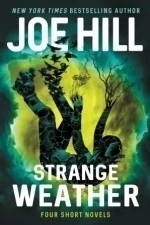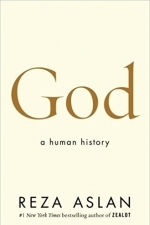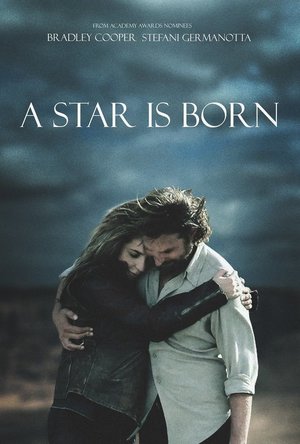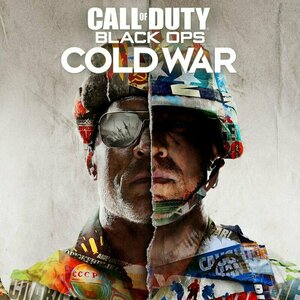Acanthea Grimscythe (300 KP) rated Strange Weather in Books
May 16, 2018
SNAPSHOT
“Snapshot,” though a bit lacking in style, is one of two stories in this small collection that I found myself capable of tolerating. I figure it’s because this short tale embodies a sort of Twilight Zone and Night Gallery feel. It read the quickest out of the four stories and I found myself nearly in tears at its conclusion, so the best I can say about it is that I either felt something, or my emotions went bonkers again.
LOADED
The second shorty story in Hill’s collection, “Loaded,” is a bunch of driveling bullshit, for lack of a better word. I’m all about our Second Amendment Rights; I even have a cup that says “Don’t ban guns, ban idiots,” but this story encompasses the stereotypical idea that every gun owner or enthusiast is a batshit crazy blowhard that’s just looking for a reason to go off. I have friends and family that appreciate this machinery, that agree people should under go background and mental wellness checks prior to purchase of a fire arm, but this? This story just adds fuel to a fire that seeks kindling via blame on inanimate objects, rather than the person behind them. The main guy of “Loaded” shows us exactly how restricting gun ownership will fail so hey, better hurry and make it entirely illegal right? Oh, and let’s not get started with the over-saturation of Social Justice Warriorness in this piece. I’m all for equality, but this? This just reeks of extremism in a way that I almost abandoned the book as a whole.
ALOFT
“Aloft” is by far the best in this collection of short stories. An embodiment of the collections title, the main character encounters something unusual while fulfilling a dead friend’s promise and from there, things really take a turn for the bizarre. While I feel Hill gives us a bit too much exposition in this tale, there are many things about it that I feel should be appreciated. For instance, the next time anyone asks me what it’s like to have ulcerative colitis, I’ll probably ask them if they’ve read “Aloft”‘ by Joe Hill, because let’s face it: the torment Aubrey goes through gastrically (is that even a word?) in this story is a pretty damned accurate depiction of the suffering people with Crohn’s and Colitis endure.
RAIN
The final story in Hill’s collection seemed like it could have had a loft of potential. “Rain” further supports the title of the collection when a torrent of crystal nails fall from the sky to impale poor, unexpecting citizens. So what’s the problem then? “Rain” is so fundamentally flawed that it’s just… no. First, Hill is more obsessed with making fun of Trump in this story than the events that occur. This isn’t a bad thing – I absolutely loathe Trump, especially considering his policies may very well shorten my lifespan significantly. “Rain” is more a mockery than the story it could be. At least the twist at the end was fairly amusing, but by that point all I could do is roll my eyes in frustration.
CONCLUSION
Joe Hill’s Strange Weather is probably a poor choice for first time introduction to his work. In fact, it’s almost a deterrent considering it’s the first book by him that I read and I was ecstatic about receiving a review copy. It is with a bit of a heavy heart for the sake of disappointment that I am forced to conclude my review with a largely poor rating. Part of my compliance with FTC guidelines as a reviewer requires that I disclose when I read a free book in exchange for an honest, unbiased review. In this case, I’d like to thank Edelweiss and HarperCollins/William Morrow for this opportunity.
Cynthia Armistead (17 KP) rated Fire Study (Study, #3) in Books
Mar 1, 2018
Snyder's world seems to be made up of just two countries: Ixia and Sitia. Ixia has been ruled by Commander Ambrose and his generals for about a decade when <i>Poison Study</i> starts, after a military coup overthrew the old monarchy. There are no beggars, every child is entitled to an education, nobody has to go hungry or homeless, and promotions are based solely on skill, with no gender or racial discrimination—but every citizen also has to wear a uniform declaring his or her proper location and job function, government approval is required for marrying, moving to a new home, or changing jobs, and anybody identified as having magic talent is killed immediately. Everyone is subject to the Code of Behavior, and there are no exceptions for any kind of extenuating circumstances. If you kill someone, you are sentenced to death, even if you were defending yourself or another.
Yelena has been in the Commander's dungeon for most of a year after killing the son of General Brazell. Valek, Ambrose's spymaster, gives her a choice: go to the gallows, or become the Commander's food taster. The job doesn't have a long life expectancy, as poisoning attempts are fairly common, but Yelena sees a chance at life better than immediate death, and takes the job.
Yelena manages to survive several attempts to murder her. The fact that Brazell wants her dead is understandable, but the other attempts are mysterious. Why would a Sitian master magician try to kill her? Who would slip poison into her wine?
<i>Magic Study</i> finds Yelena in Sitia, learning to cope with a very different way of life. Magic is almost taken for granted, and a strong family/clan structure forms the backbone of the government. But why are there beggars in the streets, and why is it that only those who can afford it are educated? Everyone in Sitia believes that life in Ixia must be horrific, but looking around her, Yelena sees that Ambrose's rule does have its benefits.
<i>Fire Study</i> moves between Sitia and Ixia, involving the leaders of both nations and intriguers who want to bring both of them down by pitching them against each other. Yelena and her friends are trying to prevent a war and reveal the traitors, but they've been declared outlaw and have to sneak around trying to figure out what's going on.
Another reviewer found Yelena too talented for belief, but I found her fairly realistic. She certainly isn't good at everything—she could use a lot of help in terms of social skills!—and the skills that she begins with and gains over the course of the trilogy do make sense. She trained as an acrobat when she was a child, so it does make sense that she is able to learn some types of self-defense without too much trouble. Some of her aptitudes make more sense after she learns more about her family background. She does find that she has magical abilities, but she isn't good at everything, and indeed, cannot seem to master some tasks that other magicians consider rudimentary.
I did find some of the betrayals to be difficult to comprehend, as some of the traitors would have no defense against mental scans. There's a Sitian Ethical Code of Conduct that prohibits non-consensual scans, but it doesn't apply to criminals, and in a war situation, I found it hard to believe that nobody ever did a little telepathic peeking at the people around them.
These were fun books, and they could be useful in looking at the pros and cons of different types of governments with teens. There's some sex in the books, but nothing terribly explicit. The violence is more troublesome, but the author never dwells on it.
Hazel (1853 KP) rated God: A Human History in Books
Dec 7, 2018
</i>
Where did religion come from? This is the question Reza Aslan, a scholar of religions, attempts to answer in his latest publication, <i>God: A Human History.</i> To date, Aslan has tackled subjects such as the life of Jesus of Nazareth, and the origins, evolution and future of Islam. In this book, the author journeys back to the earliest evidence of human existence and, using a mix of resources, theories and investigations, tries to determine how our ancestors conceived the idea of gods and souls. Maintaining the idea that the majority of humans think of God as a divine version of ourselves, Aslan also looks at the way our perception of life after death has altered due to the changes in our governments and cultures.
Reza Aslan claims that he, a Muslim-devout-Christian-convert-turned-Sufi, is neither trying to prove or disprove the existence of God or gods. Instead, he is providing readers with a thorough history of religion with a strong suggestion that we, as believers, have fashioned God in our image, and not the other way around.
Insisting that belief systems are inherited from each previous generation, Aslan takes a look at ancient cave drawings where he, and many other theorists, surmise that a form of religion was already well underway. Lack of written word results in a lot of speculation and hypothesis as to what these, usually animal-like, drawings represent, however, many have come to the conclusion that early humans had some form of animistic belief system.
Although not a dig at religion, after all, the author is religious himself, the following chapters bring in to question the authenticity of past and present beliefs. With reference to various psychologists, Aslan poses the theory that ancient humans may have misinterpreted dreams as evidence of a spirit realm. With no one qualified to clarify the things they did not understand, anything without a clear explanation may have been attributed to a god or gods.
As the author describes how religious ideas may have developed from these primitive beliefs to the fully detailed faiths of today, he labels the human race as anthropocentric creatures that have based their religions on human traits and emotions. By reporting in this way, it comes across that the past ideas of the soul, spiritual realms, gods and so forth could not possibly be true, yet, as the final chapters suggest, Aslan is still adamant about the existence of God.
Aslan’s narrative speeds up, finally reaching the recognizable religions of today. Beginning with the Israelites, enslaved by the Egyptians, the author explains, using biblical references, how the first successful monotheistic religion came about. However, researchers have studied the early Bible texts and are inconclusive as to whether the God worshipped by the Jews was the only divine being or whether there were others of a similar standing.
Next, Aslan explores Christianity, posing more questions than he solves, for example, is God one or is God three (i.e. the Holy Trinity)? He defines and compares the definitions of monotheism and pantheism, eventually bringing in Islam and the development of Sufism, which he is not afraid of admitting he agrees with.
<i>God: A Human History </i>is disappointingly short, ending with the feeble conclusion that humans are born with the ability to be convinced of the existence of a divine being and the soul, but it is our own choice to decide whether or not to believe in them. The remaining third of the book is an abundance of notes on the texts, bibliographical references, and Reza Aslan’s personal opinions about the ideas and theories mentioned in his history of religion.
Although an extensive history on the origins of religion, <i>God: A Human History </i>leaves readers none the wiser as to whether their belief is founded in truth or whether it is something that has evolved over time due to lack of understanding about the world. Granted, it was not the aim of the book to prove or disprove the existence of God, however, it may unintentionally sow seeds of doubt or, potentially, anger devout believers. However, there is no attempt at persuading readers to believe one thing or another, thus making it suitable for people of all religion and none.
Lucy Buglass (45 KP) rated A Star Is Born (2018) in Movies
Jun 20, 2019
Whilst I rate both of their performances highly, it was Gaga who really stood out to me. Despite the fact she’s a very famous, very well-respected artist in real life, when I watched the film, I saw her character, Ally, and not Lady Gaga. She truly brought Ally to life on-screen, showing us the highs and lows of a former ‘average girl’ turned superstar. She was absolutely fantastic. I could really feel everything Ally was feeling, from elation to pain. I adored her performance and it kept me hooked throughout. Unsurprisingly, her vocals were stunning too, and listening to her performances on the big screen was a real treat. She is so utterly talented and has proven she can go far beyond her singing career, and into new territories.
A Star Is Born features some great cameos too; mainly RuPaul’s Drag Race stars Willam Belli and Shangela. It was really cool to see them in a feature film, and I loved what they brought to the story. Their relationship with Ally, especially, was really lovely and highlights the inclusivity most of us strive to achieve in modern society. Their characters meant a lot to me.
In terms of Cooper’s portrayal of Jackson, he was also very convincing as an aging star battling addiction. What I loved most about his character was the sheer complexity of it, and how you didn’t know whether to feel sorry for him or berate him. The opinion of Jackson is left entirely up to the viewer, and I really respected that about the film. It has opened a lot of debates about his character’s behaviour, and it’s wonderful when a film causes audiences to do that. He is clearly very troubled but that doesn’t always excuse some of his appalling behaviour, which is presented to us in a very raw and honest way. Because of this, the film is not an easy watch, but I believe it’s an important one all the same. It was also wonderful to hear him sing, as he has a stunning voice that complements Gaga’s throughout. Together, they’ve really made something special. I’ve been listening to the soundtrack a lot since seeing the film.
I also loved the contrast in visual style throughout A Star Is Born. The choice of set design, lighting and colours perfectly reflect what the characters are feeling in that moment in time. We go from glamorous performances on stage, to grittier, intense territories. I was certainly impressed by Cooper’s first film and look forward to seeing where his journey towards directing will take him next. He’s put so much work into this and it really has paid off, giving us an emotional, heartfelt and honest story. If you’re wondering if I cried at any point, the answer is yes. That final song though…
A Star Is Born gives us an honest look into the darker side of fame, the highs and lows, what goes on behind the scenes, all of it. Whilst most of us aren’t ignorant about the fact these issues go on, this film really presents them to us in a brilliant way. The songs themselves are a huge part of this, telling their own stories and adding to the characters’ mindset. The lyrics are fantastic, and bring so much to the film. Listen closely and it’ll be easy to see why. I would definitely recommend it even if you’re not usually a lover of musical film, based on the story alone. It’s a rollercoaster of emotions from start to finish.
https://lucygoestohollywood.com/2018/10/14/a-haunting-look-at-fame-love-and-addiction-my-thoughts-on-a-star-is-born/
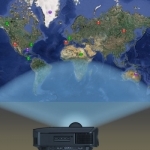
MapProjector - Create and Present Maps
Education and Navigation
App
Present live maps and satellite imagery from any iPad to a TV or projector! MapProjector lets you...
Gareth von Kallenbach (980 KP) rated Call of Duty: Black Ops Cold War in Video Games
Nov 21, 2020
Unlike Black Ops IIII, Cold War features a campaign and it is one that offers players side missions, alternate in-mission objectives, dialogue options, and differing endings.
Set in the 80s but jumping in time to Vietnam and other timeline events; the player is cast as an operative named Bell. Players have the option to customize their character in terms of name, gender, backstory and such but it does not play much into the game as “Bell” is what players are known by.
From Eastern Europe, to Vietnam, Cuba, and other locales, the game includes 80s technology and music as players must stop a Soviet General named Perseus from unleashing a Nuclear onslaught.
As fans of the series can guess; players will undertake various missions using combat, stealth, infiltration, elimination, recovery, and more to save the day. There are all sorts of weapons for players to select from ranging from Western to Eastern and allows players to experience a variety of options from sniping, run and gun, and even a Bow.
Vehicles also play a part of the game but they are more heavily featured in the multiplayer portion of the game.
The game does offer variations on the ending based on a player’s choice of completing side missions and choices they make along the way and the game also offers players the chance to grab enemies and use them as a shield in taking on enemy fire. This is one option I would love to see appear in multiplay.
The graphics are solid and some of the landscapes from jungle to frozen tundra really stand out as I was playing on an EVGA 2700 GTX card. The game was also considerably more stable than Modern Warfare was at launch as I did not encounter any issues with my gameplay.
At first I thought the campaign was short but I later realized I had become so engrossed in it that I mistakenly thought so. The levels do offer some real treats which I would love to discuss but do not want to spoil.
Multiplay is the bread and butter of the series as it is what drives the popularity of the series along as players will spend countless hours leveling up, customizing, and playing the various maps and modes as new content arrives until the release of the next game in the series.
Some have complained that the maps are a bit sparse and uninspired but I have enjoyed my time in the multiplayer and enjoy the fact that I can now select only the modes I wish to play for Quickplay to avoid being placed in a mode I do not wish to play.
The Co-Op Mode I enjoyed so much in Modern Warfare is gone this time around in favor of a Zombie mode and while it does not shake things up much from the prior Zombie offerings; it does offer plenty of entertainment and I look forward to seeing more content in the future.
There is an Assault mode where players can use vehicles ranging from Tanks, Snowmobiles, Jet Skis, Gun Boats and more which adds to the fun as ramming your ride into a landing area which an explosive attached is great fun.
The only issue I had with the game was with Warzone as attempting to launch it took me to desktop and out of the game so hopefully this will be smoothed out soon as new updates are already out for the game and next week will see the return of the popular Nuketown map which now is updated to 1984.
In the end Black Ops Cold War does not reinvent the franchise but rather gives players more of what they have come to expect with a few new wrinkles to the mix.
4 stars out of 5

Smoovie Stop Motion
Photo & Video and Education
App
"Smoovie will help you to create a lesson that your children will remember, whatever your subject." ...

Ultimate Teen Patti — UTP
Games
App
Teen Patti is the most thrilling card game and Ultimate Teen Patti is the number one Teen Patti app...

Baby Monitor 3G
Lifestyle and Health & Fitness
App
The First HD quality multiplatform Baby Monitor is here! BABY MONITOR 3G is a universal video and...

Grace - Picture Exchange for Non-Verbal People
Education
App
Grace App - winner of the 2010 Irish Web Awards and United Nations World Summit Award Mobile. * * *...
